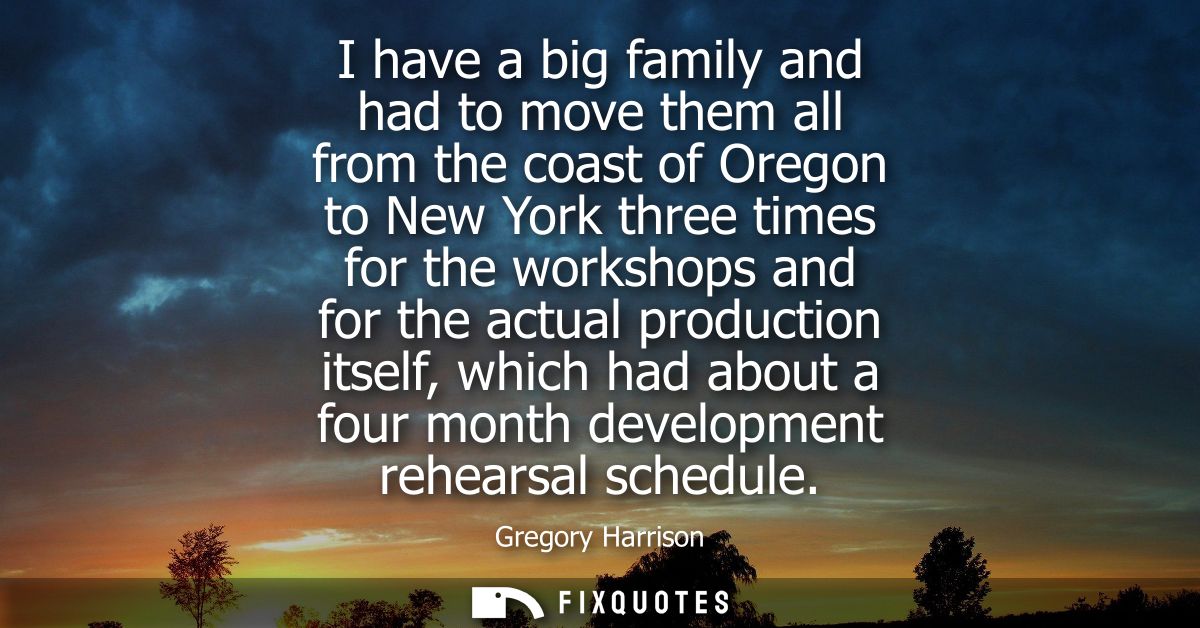"I have a big family and had to move them all from the coast of Oregon to New York three times for the workshops and for the actual production itself, which had about a four month development rehearsal schedule"
About this Quote
Gregory Harrison reveals the hidden logistics behind artistic work: the craft is not only performed on stage or set, but carried across miles, calendars, budgets, and the lives of loved ones. The phrase “big family” enlarges every decision; each trip becomes a caravan of obligations, schools, housing, childcare, finances, and routines uprooted. Oregon to New York is not a casual shuffle but a cross-continental leap, repeated three times. That repetition hints at the iterative nature of theater development: workshops to shape the piece, then the full production, each phase demanding physical presence, flexibility, and long stretches of uncertainty.
A four-month development and rehearsal schedule underscores the scale of commitment. This is not a short booking; it is a season of life reorganized around a project. The choice to move everyone, rather than leave them behind, suggests a refusal to fragment family life for the sake of work. It also implies a financial and emotional gamble: housing in New York, temporary stability, and the constant effort to recreate a home in motion. The romantic image of the working actor is tempered by the structural reality that the industry is concentrated in a few cities, compelling artists to chase opportunity at great personal cost.
The statement surfaces the invisible labor that underwrites creative achievements, planning, negotiating, absorbing risk, and holding a family together amid professional demands. It acknowledges the rarity of institutional supports for artists with families: limited relocation assistance, unpredictable schedules, and undercompensated development periods. Yet it also speaks to purpose. To endure multiple relocations for workshops, where outcomes are not guaranteed, signals belief in the material, in collaborators, and in the long game of artistic growth.
Beneath the logistical saga is a portrait of commitment: to craft, to family, and to making a life where both coexist, even when the map and the calendar resist.
More details
About the Author

